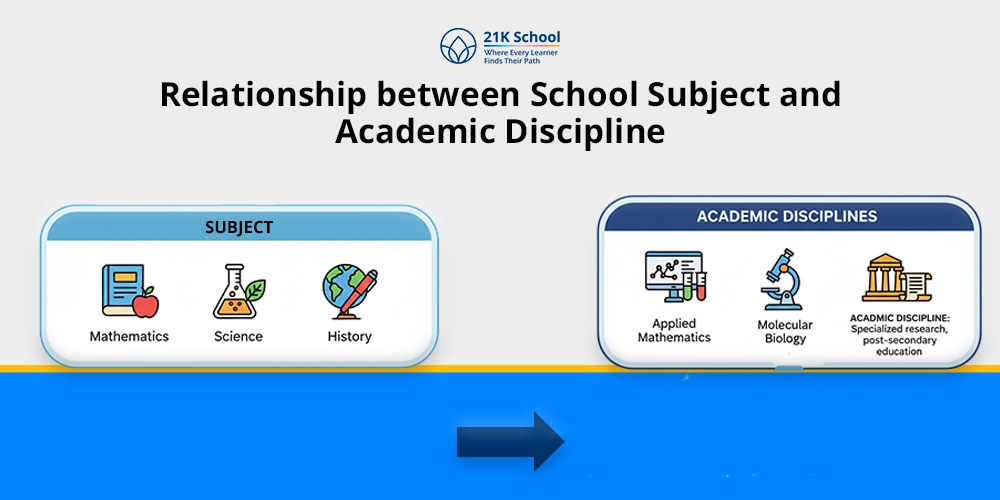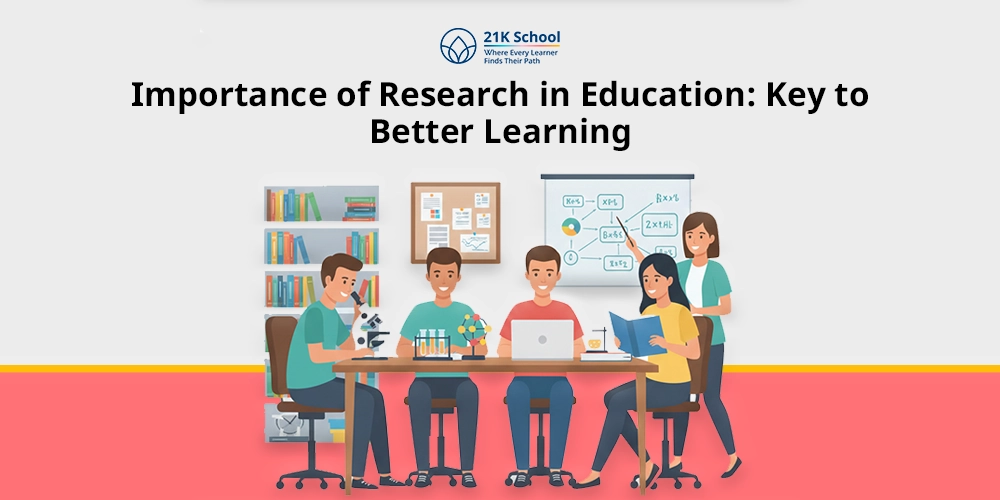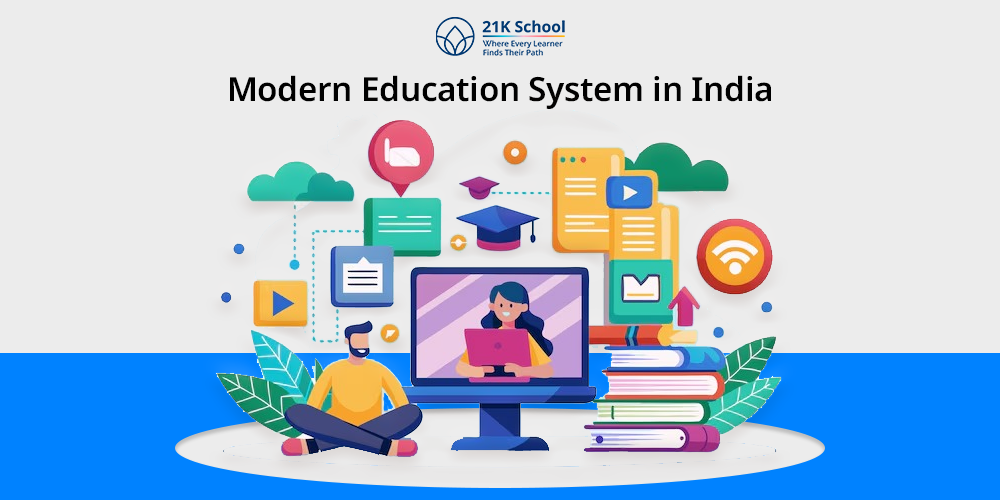
Education in India has been on a tremendous journey of evolution. It is no longer about textbooks, but about encouraging skills, creativity and critical thinking .
This blog will explore the structure, benefits, challenges and future of modern education in India, and why it is crucial for the progress of the country.
Contents
- 1 What is the Modern Education System in India?
- 2 Ancient and Modern Education Systems in India: Meaning and Differences
- 3 Key Aspects of the Modern Indian Education System
- 3.1 1. New Academic Structure
- 3.2 2. From Memorising to Meaningful Learning
- 3.3 3. Learning in One’s Mother Tongue
- 3.4 4. Leverage Technology in Education
- 3.5 5. Education for All Children
- 3.6 6. Experiential Learning
- 3.7 7. Better Ways to Assess Learning
- 3.8 8. Better Training and Support for Educators
- 3.9 9. More Flexibility and Choice in Higher Education
- 3.10 10. Shift Toward Global Learning
- 4 Disadvantages of the Modern Education System in India
- 5 Conclusion: Building a Smarter, Inclusive Education Model for All
What is the Modern Education System in India?
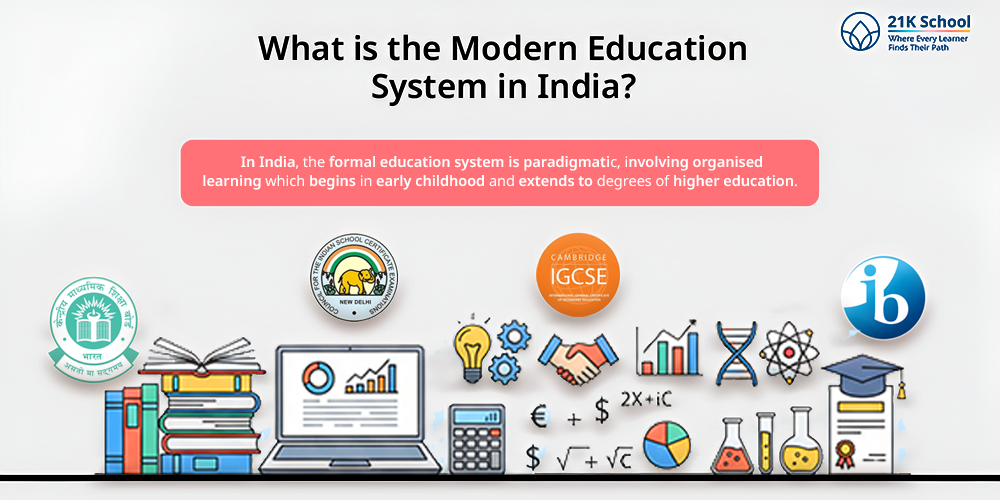
In India, the formal education system is paradigmatic, involving organised learning which begins in early childhood and extends to degrees of higher education.
The process is is governed under a system of curriculum, designed and followed by various boards, including but not limited to, the Central Board of Secondary Education (CBSE), Councils for the Indian Certificate of Secondary Education (ICSE), state boards, and international boards such as International Baccalaureate (IB) and International General Certificate of Secondary Education (IGCSE).
This system emphasises interdisciplinary learning and skill development. For example, subjects like mathematics, sciences, languages, and social studies are complemented with technology, art, sports, and soft skills.
An evaluation involves the use of tests, projects and practicals to measure both knowledge and application.
Over the last few years, especially after the COVID-19 pandemic, digital learning tools and online platforms have become an integral part of teaching.
The rise of virtual schools , e-learning tools and hybrid classrooms marks a new phase in how Indian students receive their education.
Ancient and Modern Education Systems in India: Meaning and Differences
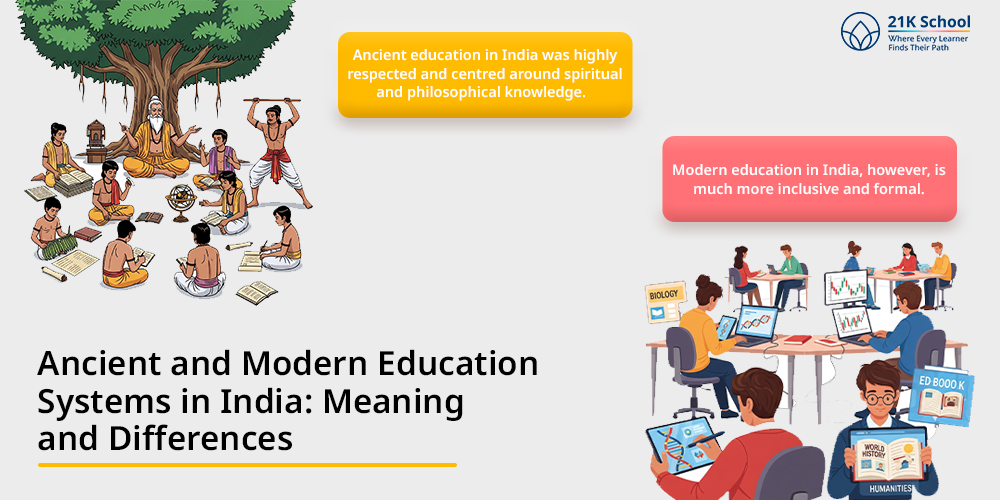
Ancient education in India was highly respected and centred around spiritual and philosophical knowledge.
Gurukuls were traditional schools where students lived with their teachers (gurus) and learned through oral instruction, observation, and discussion. Subjects included the Vedas, astronomy, logic, ethics, and warfare, often taught in Sanskrit.
Modern education in India, however, is much more inclusive and formal. It introduces students to a wide range of subjects, including the sciences, commerce, humanities, and vocational studies .
Learning is now supported by printed textbooks, digital resources, internet access, and trained professionals.
Difference Between the Ancient and Modern Education System in India
| Aspect | Ancient Education System | Modern Education System |
| Mode of Learning | Oral learning, memorisation, and discussion-based | Textbooks, digital tools, classroom teaching, and online platforms |
| Medium of Instruction | Mostly in Sanskrit or regional languages | English, Hindi, and other regional languages |
| Location of Learning | Gurukuls in natural or spiritual settings | Schools, colleges, universities, and virtual classrooms |
| Subjects Taught | Vedas, philosophy, astronomy, logic, warfare | Science, mathematics, languages, arts, commerce, technology, life skills |
| Teacher-Student Relation | Close, lifelong guru-shishya bond | Professional and formal interaction between teachers and students |
| Access to Education | Restricted to upper caste males | Open to all, with efforts toward inclusive and universal access |
| Assessment Method | Continuous observation by the guru | Periodic tests, assignments, practicals, and board exams |
| Purpose of Education | Moral, spiritual, and character development | Academic success, skill-building, and career readiness |
| Use of Technology | None | Widespread use of digital tools, smart classes, and e-learning platforms |
| Curriculum Flexibility | Highly personalised based on students’ ability and interest | Structured syllabus by boards; slowly moving toward more flexibility |
Key Aspects of the Modern Indian Education System
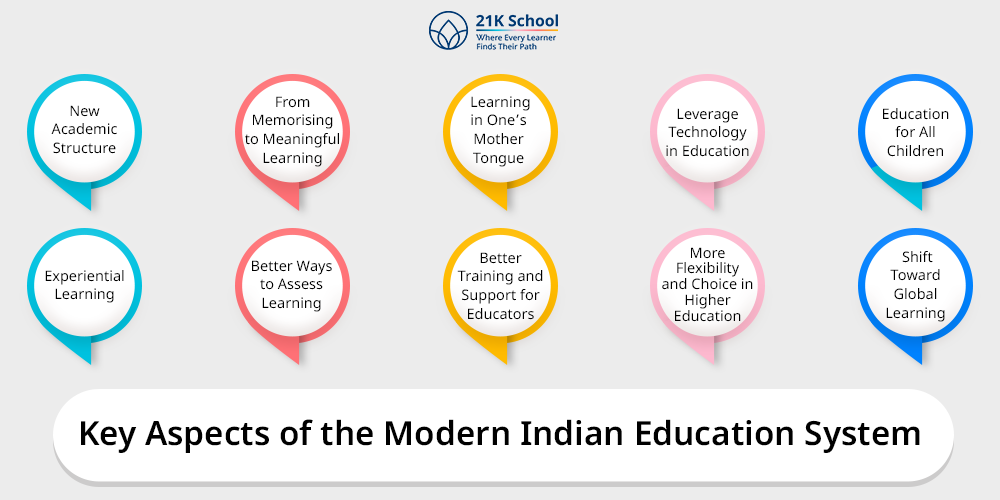
There have been many changes in our education system over the years. Here are the key factors of the current education system in India:
1. New Academic Structure
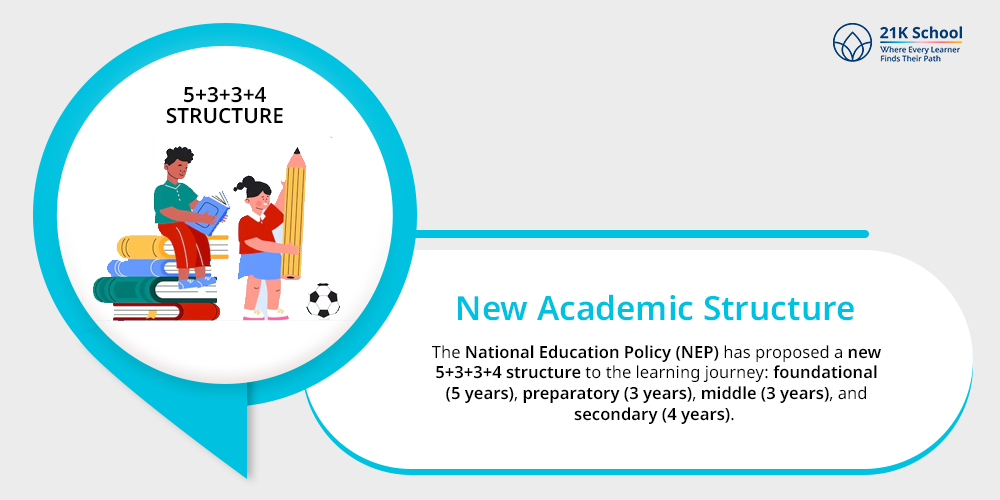
The National Education Policy (NEP) has proposed a new 5+3+3+4 structure to the learning journey: foundational (5 years), preparatory (3 years), middle (3 years), and secondary (4 years).
2. From Memorising to Meaningful Learning
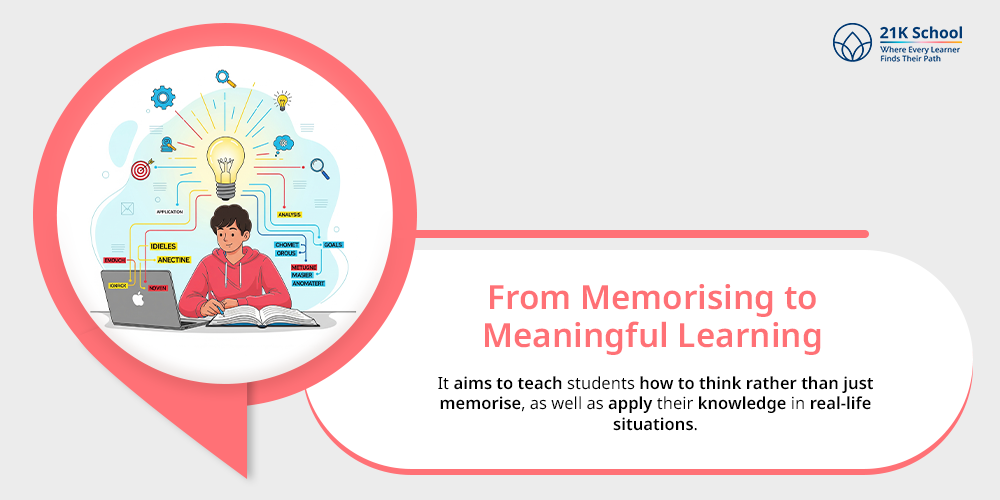
The NEP has implemented a transition from rote learning to a richer understanding of concepts. It aims to teach students how to think rather than just memorise, as well as apply their knowledge in real-life situations.
3. Learning in One’s Mother Tongue
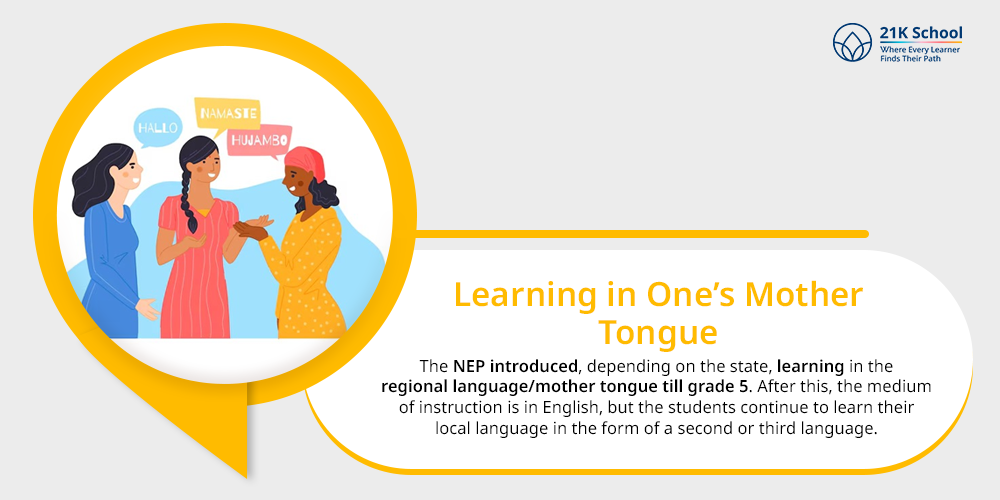
The NEP introduced, depending on the state, learning in the regional language/mother tongue till grade 5. After this, the medium of instruction is in English, but the students continue to learn their local language in the form of a second or third language. This way, the student is confident in two languages.
4. Leverage Technology in Education
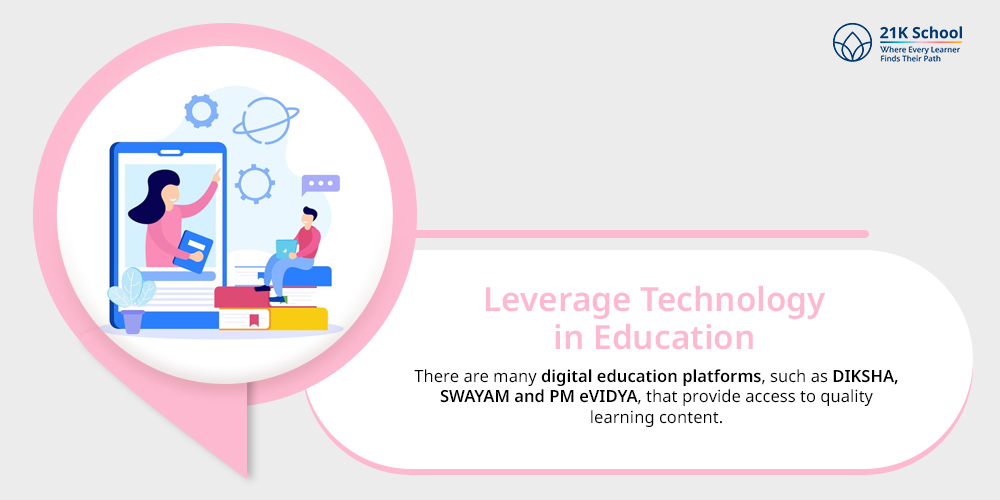
There are many digital education platforms, such as DIKSHA, SWAYAM and PM eVIDYA, that provide access to quality learning content. The aim is to support every child’s learning pace and style.
5. Education for All Children
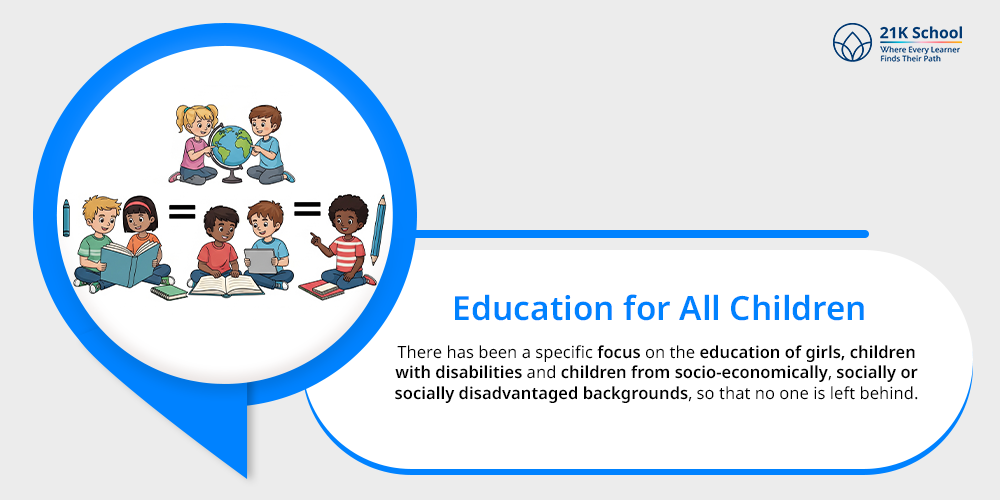
Inclusive education is central to the NEP . There has been a specific focus on the education of girls , children with disabilities and children from socio-economically, socially or socially disadvantaged backgrounds, so that no one is left behind.
6. Experiential Learning
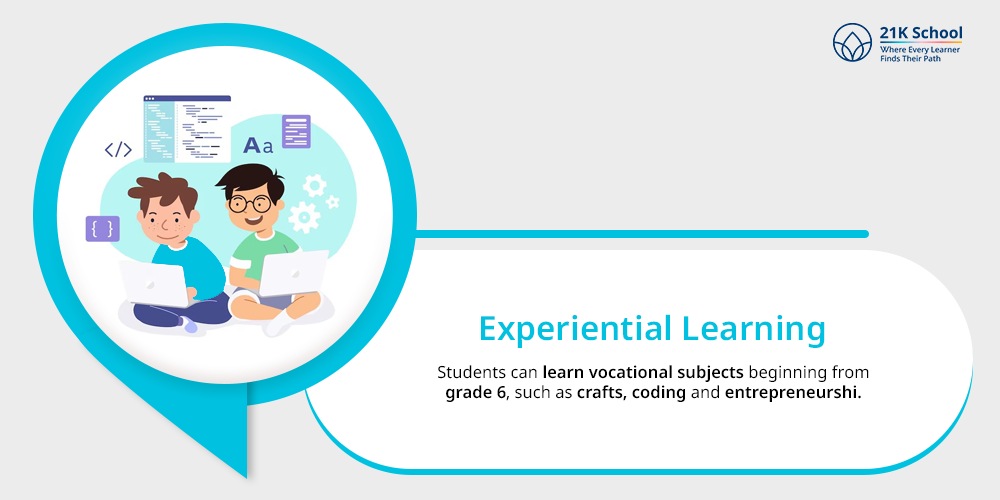
Students can learn vocational subjects beginning from grade 6, such as crafts, coding and entrepreneurship , with the aim of creating confident, independent and well-rounded individuals with strong employability skills.
7. Better Ways to Assess Learning
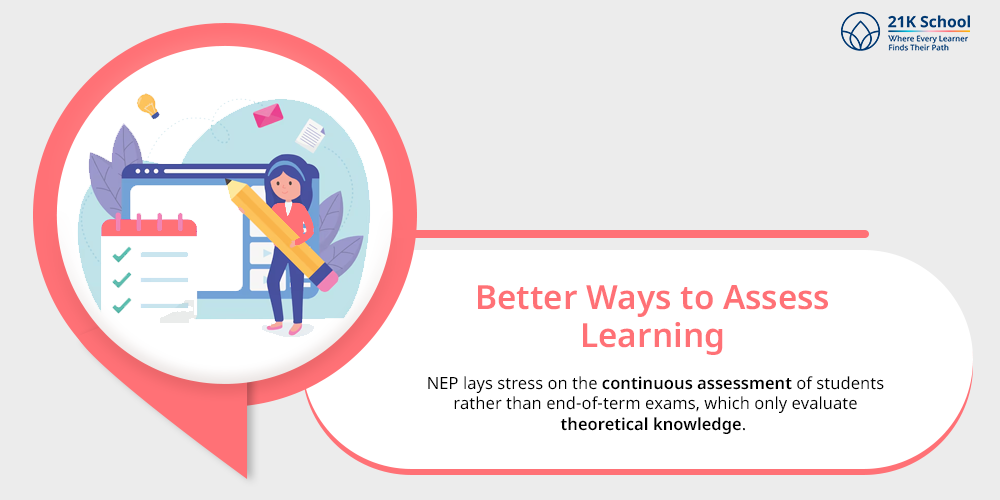
NEP lays stress on the continuous assessment of students rather than end-of-term exams, which only evaluate theoretical knowledge . Holistic reports will include progress in skills like collaboration, communication, critical thinking and problem-solving , along with academic scores.
8. Better Training and Support for Educators
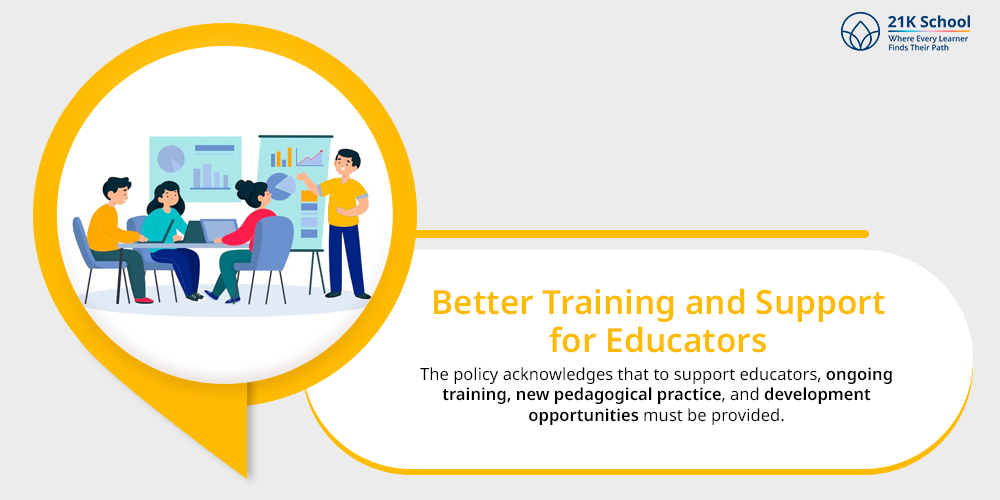
Educators are an integral part of the education system. The policy acknowledges that to support educators, ongoing training, new pedagogical practice, and development opportunities must be provided.
9. More Flexibility and Choice in Higher Education
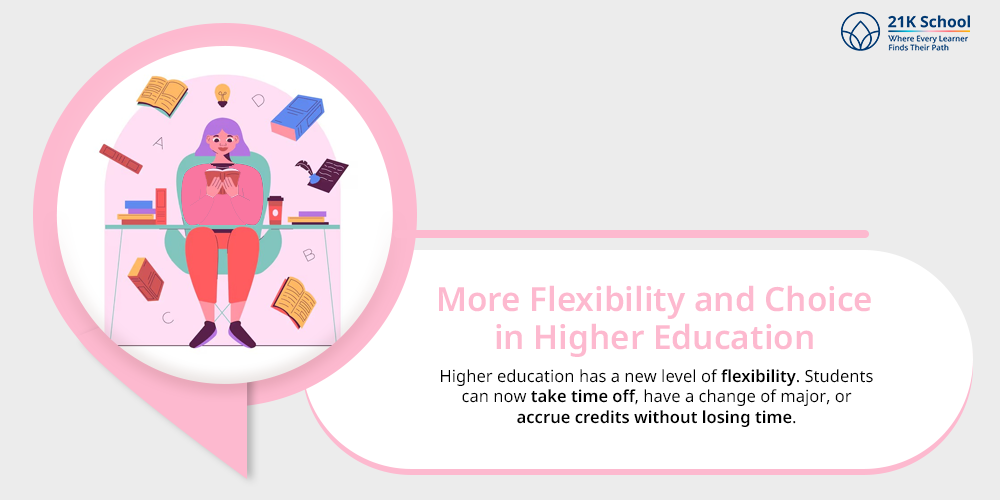
Higher education has a new level of flexibility. Students can now take time off, have a change of major, or accrue credits without losing time. This allows for exploration, as well as accommodation due to circumstances.
10. Shift Toward Global Learning
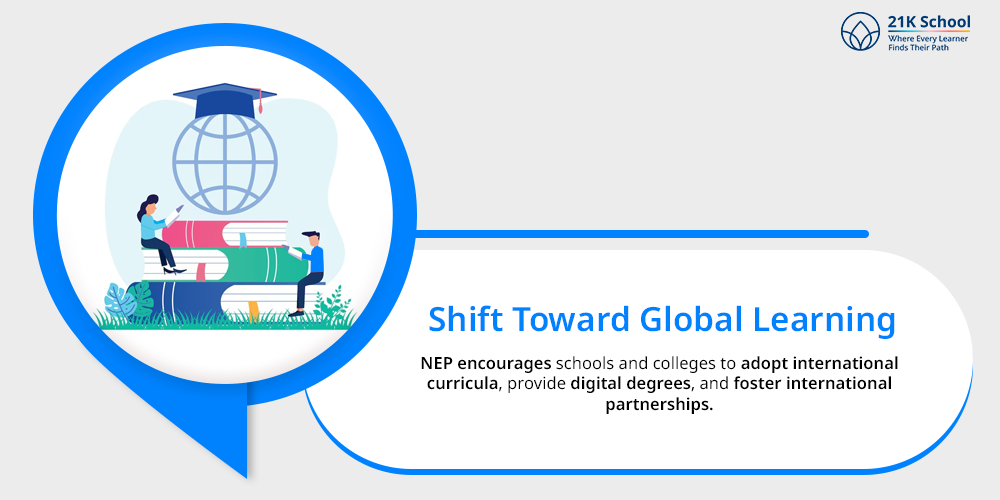
NEP encourages schools and colleges to adopt international curricula, provide digital degrees, and foster international partnerships to carve pathways for student entry into both the Indian and global landscape.
Disadvantages of the Modern Education System in India
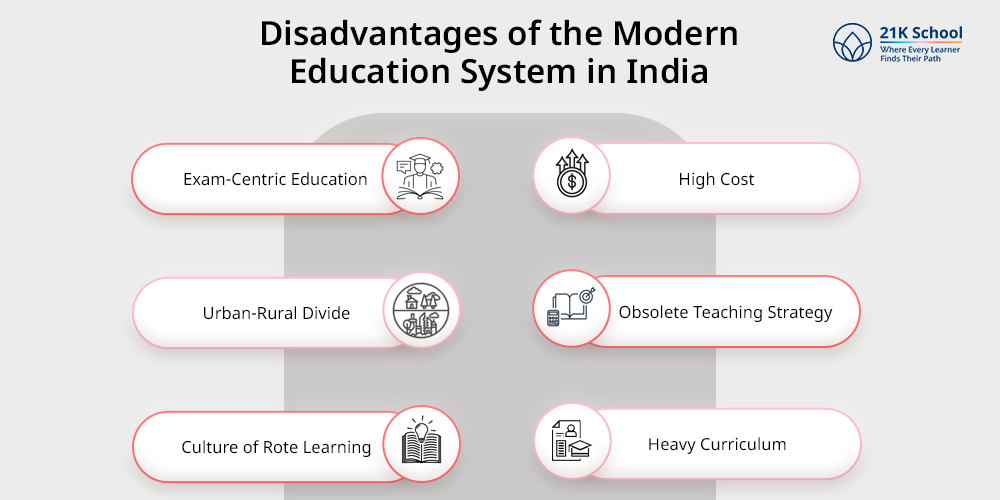
While we can see progress with the country’s current education system, the system still has a lot of challenges ahead:
1. Exam-Centric Education
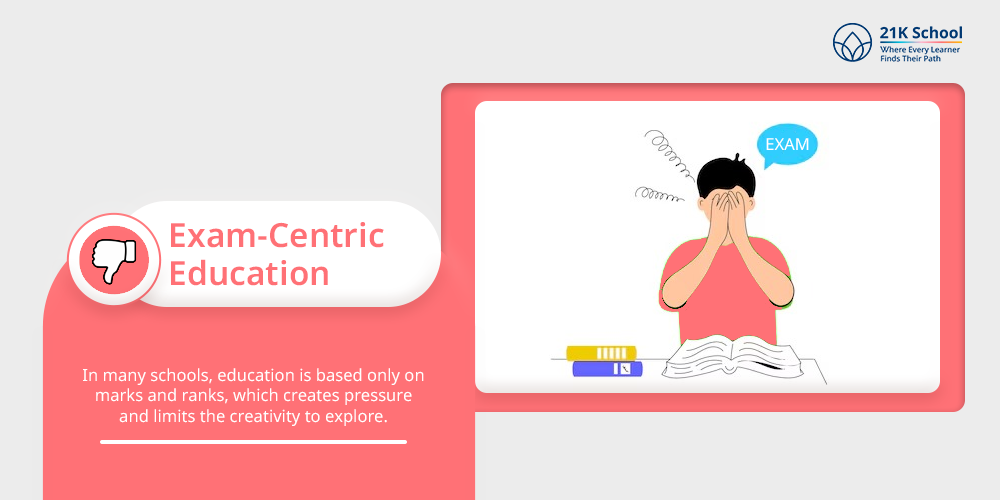
In many schools, education is based only on marks and ranks, which creates pressure and limits the creativity to explore.
2. Urban-Rural Divide
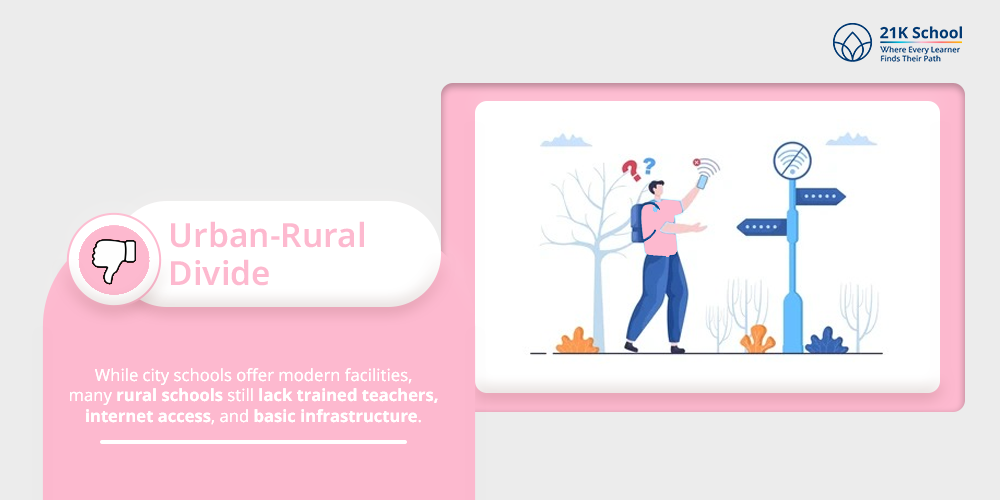
While city schools offer modern facilities, many rural schools still lack trained teachers, internet access, and basic infrastructure.
3. Culture of Rote Learning
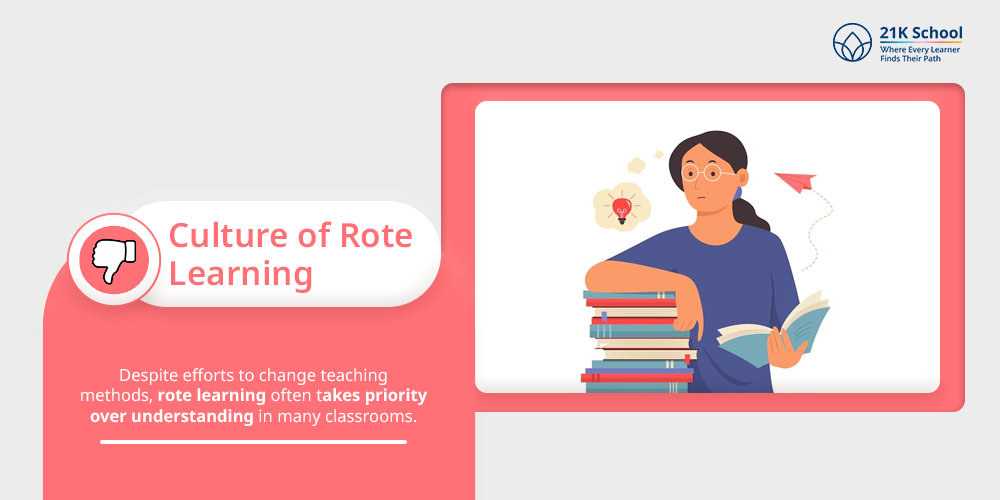
Despite efforts to change teaching methods , rote learning often takes priority over understanding in many classrooms.
4. High Cost
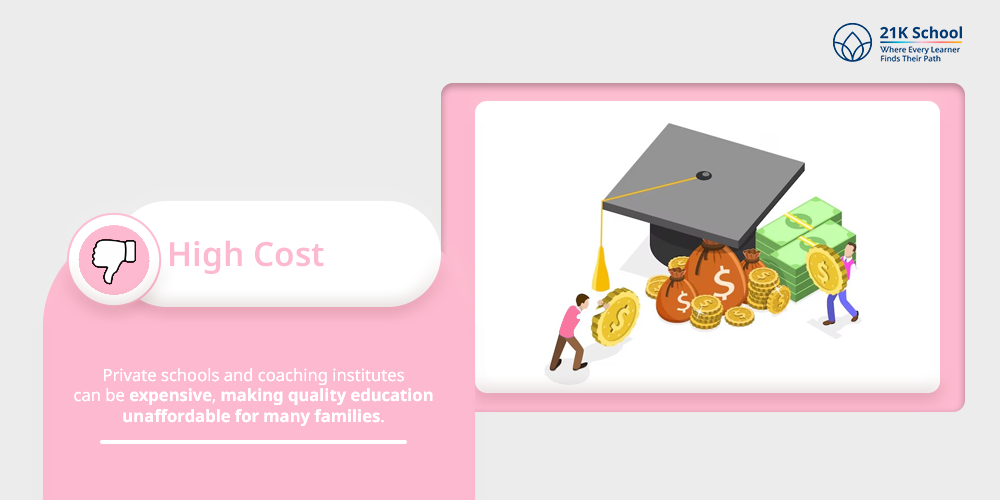
Private schools and coaching institutes can be expensive, making quality education unaffordable for many families.
5. Obsolete Teaching Strategy
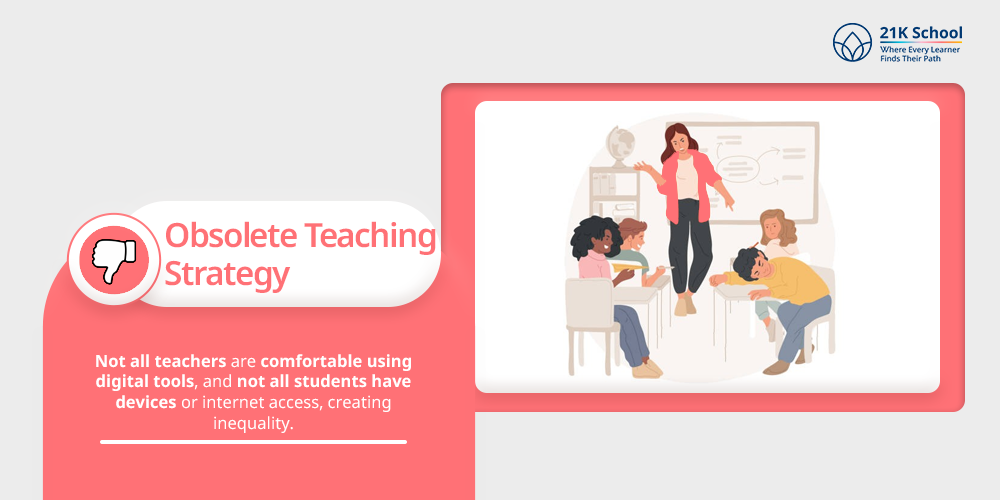
Not all teachers are comfortable using digital tools, and not all students have devices or internet access, creating inequality.
6. Heavy Curriculum
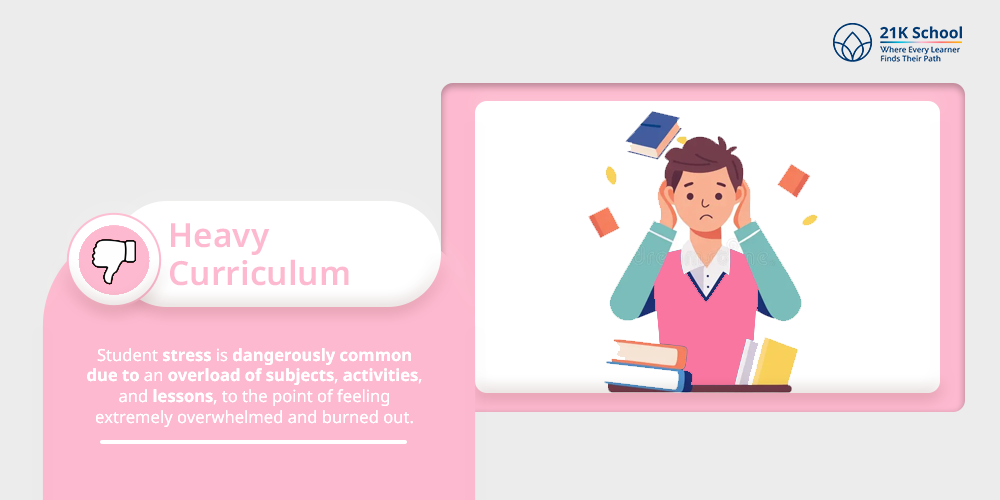
Student stress is dangerously common due to an overload of subjects, activities, and lessons, to the point of feeling extremely overwhelmed and burned out.
Conclusion: Building a Smarter, Inclusive Education Model for All
With the right mix of tradition, innovation, and inclusivity, India’s education system can shape a generation that is not only well-educated but also socially responsible and globally competitive.
To achieve this, we must continue investing in technology, teacher training, infrastructure, and curriculum development. The availability of online schooling like online primary school can be explored.
Here, policies like NEP 2020 are steps in the right direction, but their success depends on timely and effective implementation.
The future of education in India lies in building a system that is flexible, student-focused, and rooted in real-world skills; a model where every child has the chance to learn, grow, and succeed.

